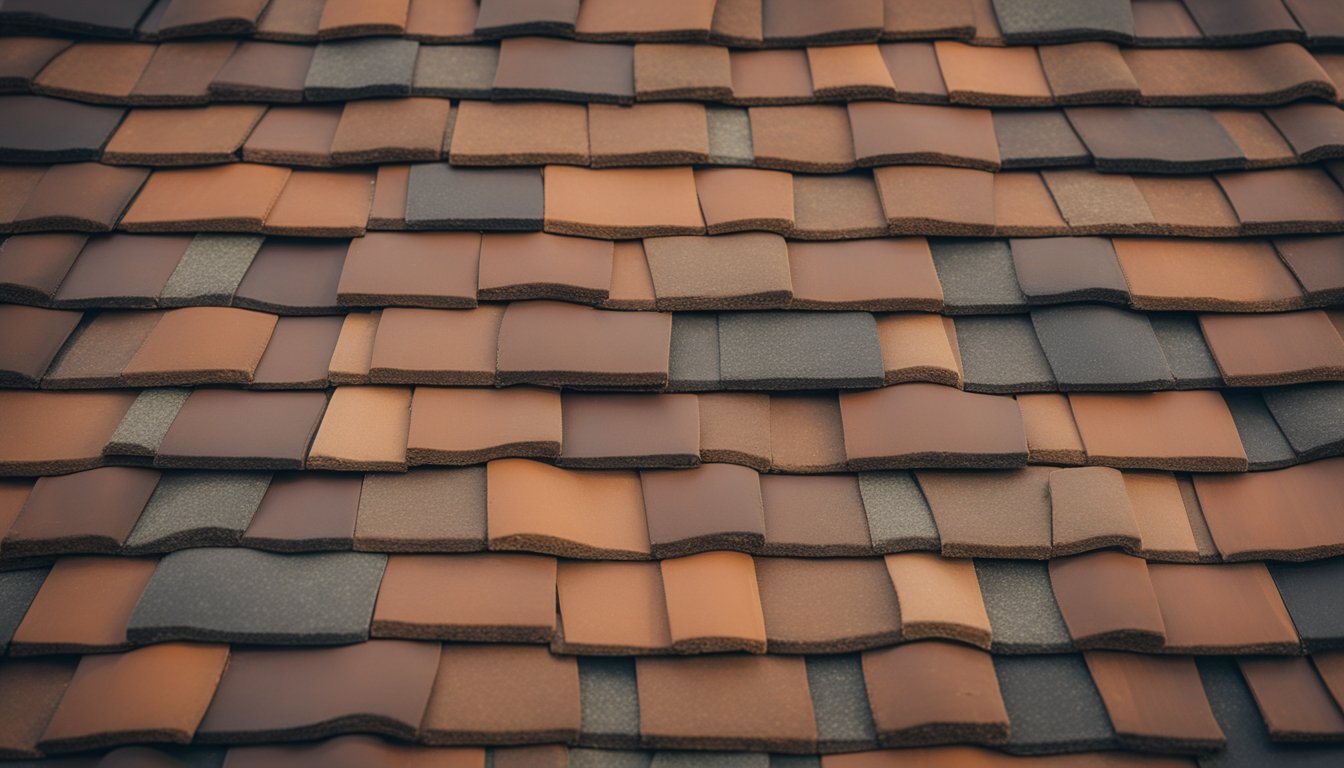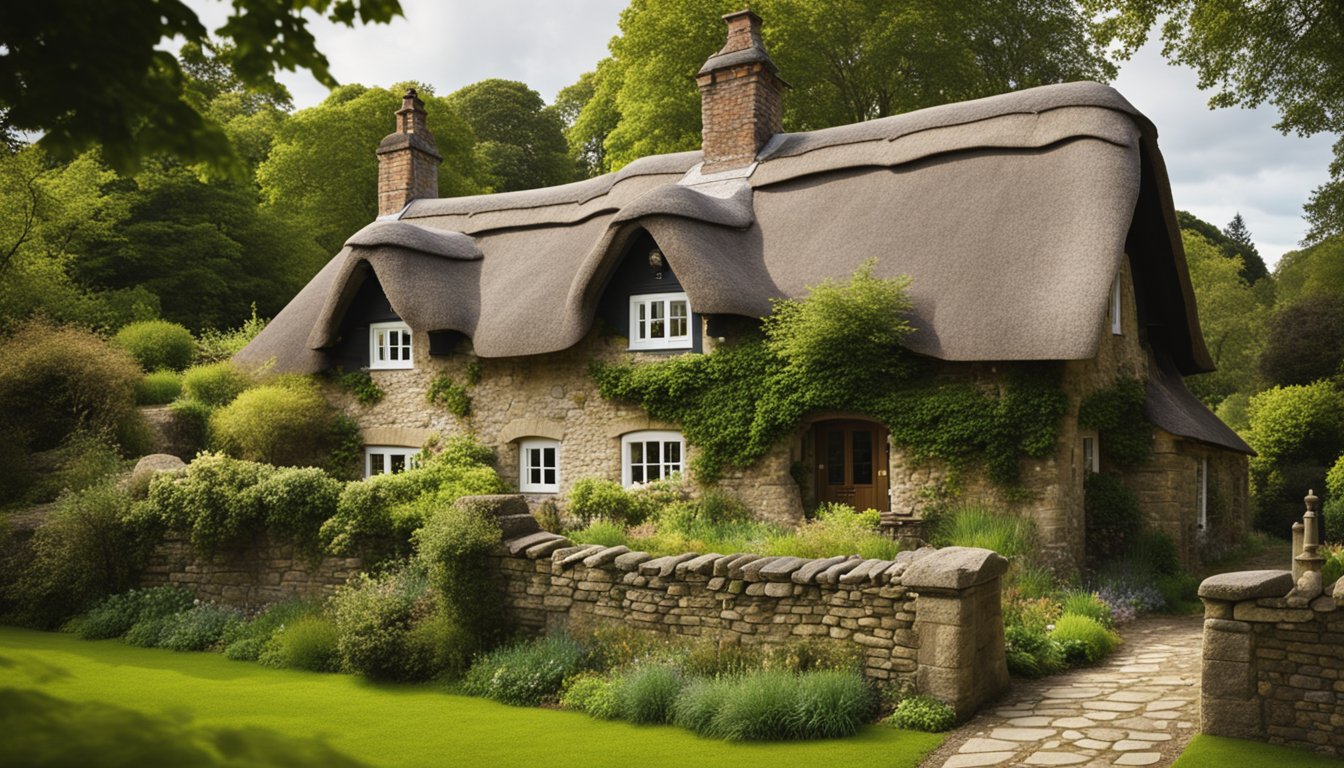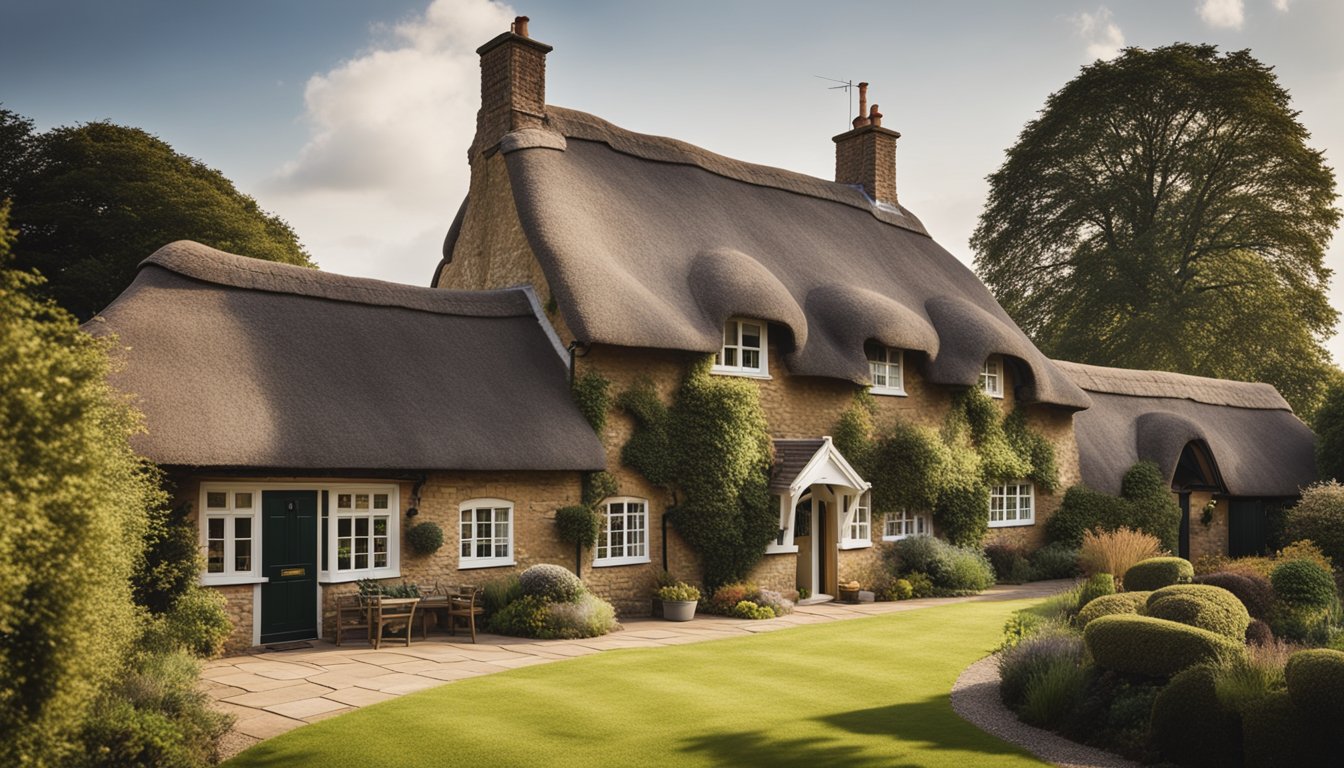Late updated: 14 Aug 2024 09:08
Written by: Oliver Bennett
Unique Roofing Materials for UK Architectural Heritage: Preserving Tradition with Modern Innovations
Unique roofing materials are essential in maintaining the architectural heritage of the UK. These materials not only enhance the aesthetic appeal of historical buildings but also ensure their longevity. Using traditional substances like slate, copper, and reclaimed timber helps preserve the unique character and charm of heritage buildings. For instance, in Edinburgh, the utilisation of copper and slate materials has effectively maintained the city’s timeless architectural allure.

Handcrafted and meticulously detailed reproduction stone products have emerged as excellent alternatives to natural materials, especially when the original resources become scarce or unavailable. These substitutes provide the same visual impact while meeting modern conservation standards. We believe leveraging such innovative solutions plays a crucial role in preserving our rich architectural history.
Managing heritage roofing presents its own set of challenges, from sourcing suitable materials to adhering to rigorous conservation regulations. In our experience, collaborating with reputable suppliers who offer high-quality, authentic products facilitates the restoration process. By embracing both traditional and modern roofing materials, we can ensure that these iconic buildings stand the test of time.
Key Takeaways
- Traditional materials like slate and copper preserve the aesthetic and longevity of heritage buildings.
- Reproduction stone products serve as excellent substitutes when original materials are scarce.
- Collaborating with reputable suppliers helps manage heritage roofing challenges effectively.
Historical and Traditional Roofing Materials

Our rich architectural heritage in the UK is beautifully reflected in the material choices for roofing, combining aesthetic appeal with durability. Various historical and traditional roofing materials have held a key place in preserving the historic significance and integrity of our buildings.
Slate: The Bedrock of Heritage
Slate roofs have a profound historical significance in the UK. Natural slate has been used for centuries due to its remarkable longevity, resistance to weather, and elegant appearance. Conservation officers often recommend slate for heritage buildings because it maintains historical integrity while providing robust protection.
The use of natural slate involves traditional techniques passed down through generations. Skilled craftsmen meticulously cut and lay each piece, ensuring that it fits perfectly and withstands the elements. Architects and heritage roofing services prefer slate for restoration and repair projects due to its aesthetic and functional qualities.
Tile and Thatch: Craftsmanship through the Ages
Clay tiles and thatch represent the skilled craftsmanship of bygone eras. Clay tiles, with their rich terracotta hues, are not only durable but also provide excellent thermal performance. These tiles are often found on older buildings and historical structures in the UK, reflecting traditional architectural styles.
Thatch roofing, made from reed or straw, harks back to ancient building traditions. Thatch roofs require the expertise of skilled craftsmen who have honed their skills over generations. This type of roofing is celebrated for its rustic charm and excellent insulation properties, making it a beloved choice for restoration projects on heritage buildings.
Lead and Copper: Metals with a Historic Edge
Leadwork has been central to historic roofing, providing essential features such as flashings and intricate roof details. Lead's malleability and resistance to corrosion make it a favourite among conservation officers and architects. Lead roofs, often seen on significant historic buildings, offer a timeless aesthetic while ensuring durability.
Copper roofing, similar to lead, boasts a long history in the UK. Copper is not only durable but also develops a beautiful patina over time. This material is used for both roofing and ornamental purposes, reflecting the intricate craftsmanship of historic periods. Copper's longevity and minimal maintenance requirements make it an excellent choice for preserving the historical integrity of buildings.
By focusing on these traditional materials, we ensure the preservation and continuation of our architectural heritage for future generations.
Managing Heritage Roofing Challenges
Preserving the historical integrity of heritage buildings while ensuring the durability and aesthetic appeal of their roofs presents a unique set of challenges. It requires specialised skills, appropriate materials, and a deep respect for the building's historic value.
Ensuring Durability in Adverse Weather Conditions
Buildings of historical significance, such as stately homes and listed buildings, often face harsh weather conditions that can severely affect their roofs. Regular inspections and maintenance are essential to identify potential issues early.
Contractors should use high-quality materials that match the original ones as closely as possible. This maintains both the durability and aesthetic consistency of the structure. Utilising weather-resistant, conservation-grade materials promotes longevity and helps in managing repair costs.
Engaging experienced heritage roofing contractors listed in the National Heritage Roofing Contractors Register provides assurance of specialised knowledge and skills necessary for this delicate work.
Balancing Aesthetic Appeal with Historical Integrity
The character and aesthetics of heritage properties are paramount. Maintaining historical integrity means using materials that match the period when the building was constructed. This can make the sourcing of materials a meticulous task.
English Heritage guidelines advise on methods and materials that are suitable for conservation. Roofing services must balance adopting modern, effective techniques while preserving the original charm and details of the property.
Surveyors and contractors need to work collaboratively to ensure that any maintenance or repair work sustains the property's historic value without compromising on quality or appearance.
Modern Approaches to Roofing Maintenance
Modern science and technology have introduced new methods to heritage roofing that align with traditional craftsmanship. Advanced techniques and materials enable us to ensure more effective protection and longer-lasting repairs.
Modern materials that mimic historic ones can be used, provided they do not detract from the original design. This approach allows for practical maintenance solutions without sacrificing the building’s historical feel.
Heritage roofing today often involves a mix of traditional workmanship and cutting-edge scientific approaches, ensuring that our cultural treasures are safeguarded for future generations. The careful integration of modern methods with time-honoured practices ensures that we respect and retain the unique attributes of these significant buildings.
Frequently Asked Questions

In this section, we address common inquiries related to the unique materials used in roofing for the UK's architectural heritage. Each topic delves into the specifics of traditional and modern materials, their features, and their financial aspects.
What materials are traditionally used for thatched roofing in the UK?
Thatching involves using plant materials such as straw, water reed, sedge, and heather. These materials are chosen for their durability and aesthetic appeal, providing a distinct look tied to British heritage. Thatch roofs not only offer a traditional appearance but also have good insulation properties.
How has British architectural heritage influenced modern roofing materials?
British architectural heritage has inspired the use of materials that blend traditional aesthetics with modern durability. Slate, clay tiles, and modern synthetic materials mimic historical designs while offering enhanced performance. Advances in engineering have allowed for the replication of old-world charm with the benefits of contemporary technology.
What are the distinguishing features of roofing materials on historical English cottages?
The roofing materials on historical English cottages often feature locally sourced materials. Slate, clay tiles, and thatch are predominant. The craftsmanship is meticulous, with patterned tiling and unique shapes contributing to the nostalgic appearance. These roofs often have steep pitches, which help in shedding rainwater efficiently.
Can you identify the common materials used for roofing in England's heritage buildings?
Common materials in England's heritage buildings include natural slate, clay tiles, lead, and thatch. Slate is renowned for its longevity, while clay tiles provide a classic look and excellent durability. Leadwork is often seen on older structures, offering robust protection against weathering.
What innovative roofing materials are compatible with maintaining the UK's architectural heritage?
Innovative materials such as composite slate and synthetic thatch provide the look of traditional roofs with the benefits of modern materials. These alternatives are lighter, more durable, and often more cost-effective. They are designed to meet current building standards while preserving the historical integrity of the structures.
What are the cost implications of using historical roofing materials in contemporary construction?
Using historical roofing materials in contemporary construction can significantly impact costs. Authentic materials like natural slate or clay tiles are generally more expensive than synthetic alternatives. Labour costs can also rise due to the specialised skills required. However, the investment can increase property value and ensure compliance with heritage preservation standards.
